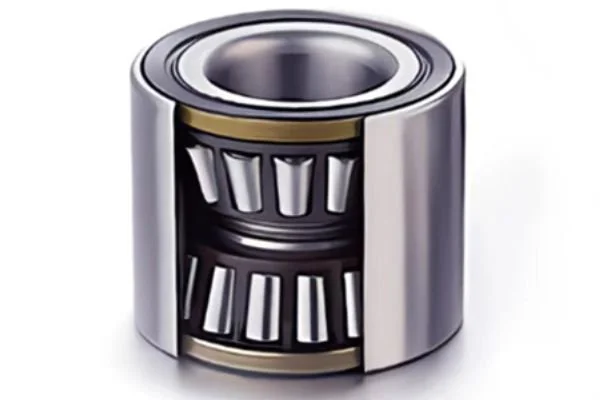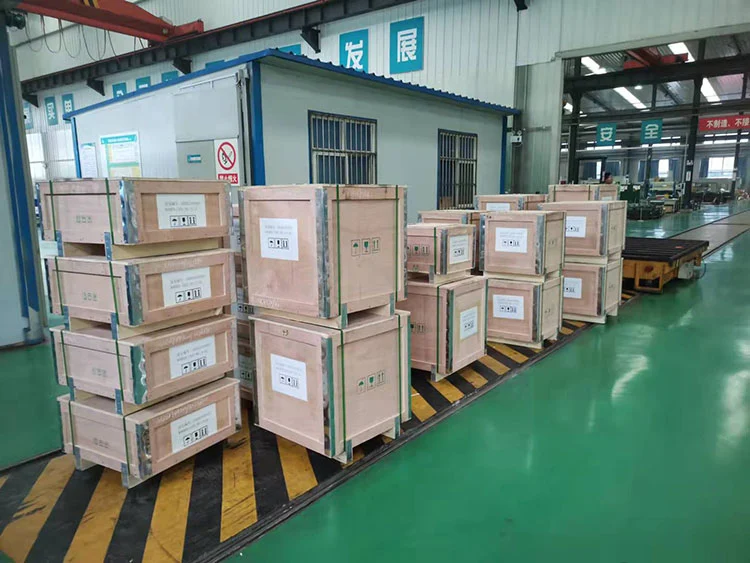Selection Guide for Large Tapered Roller Bearings in Heavy Equipment
When it comes to heavy equipment and machinery, the choice of bearings plays a crucial role in ensuring optimal performance, durability, and reliability. Large tapered roller bearings are particularly important components in these applications due to their ability to handle heavy radial and axial loads simultaneously. This comprehensive selection guide aims to provide valuable insights into choosing the right large tapered roller bearings for heavy equipment. We'll explore the key factors to consider, including load capacity, operating conditions, size requirements, and material specifications. Whether you're working in construction, mining, or industrial manufacturing, understanding how to select the most suitable large tapered roller bearings can significantly impact your equipment's efficiency and longevity. Let's delve into the essential aspects that will help you make informed decisions when selecting these critical components for your heavy machinery.
What are the key factors to consider when selecting large tapered roller bearings for heavy equipment?
Load Capacity and Type
When selecting large tapered roller bearings for heavy equipment, one of the most critical factors to consider is the load capacity and type. Large tapered roller bearings are designed to handle substantial radial and axial loads, making them ideal for applications where heavy forces are involved. The unique design of these bearings, with their conical rollers arranged to converge at a single point, allows for superior load distribution and stability. It's essential to carefully assess the specific load requirements of your equipment, including both static and dynamic loads, to ensure the chosen bearings can withstand the forces they'll be subjected to. Additionally, consider the direction of the loads – whether they're primarily radial, axial, or a combination of both. Large tapered roller bearings excel in handling combined loads, but the ratio of radial to axial forces can influence the optimal bearing selection.
Operating Conditions
The operating conditions in which the large tapered roller bearings will function are another crucial consideration in the selection process. These conditions can significantly impact the performance and lifespan of the bearings. Factors such as temperature, speed, and environmental contaminants must be carefully evaluated. High temperatures can affect the bearing's material properties and lubrication requirements, while extreme speeds may necessitate special designs or materials to ensure proper function. In harsh environments where dust, moisture, or corrosive substances are present, selecting large tapered roller bearings with appropriate seals or protective coatings becomes essential. Additionally, consider any shock loads or vibrations that the equipment may experience during operation, as these can influence the bearing's performance and durability. By thoroughly assessing the operating conditions, you can choose large tapered roller bearings that are best suited to withstand the specific challenges of your application.
Size and Fit Requirements
Accurate sizing and proper fit are essential aspects of selecting large tapered roller bearings for heavy equipment. The bearing's dimensions must be compatible with the shaft and housing in which it will be installed. This includes considering not only the inner and outer diameters but also the bearing width and any specific mounting requirements. Large tapered roller bearings often come in various configurations, such as single-row, double-row, or four-row designs, each offering different load capacities and space requirements. It's crucial to evaluate the available space within the equipment and choose a bearing size that provides the necessary load capacity without compromising the overall design. Additionally, consider the fit between the bearing and its mating components – whether a tight fit is required for certain applications or if some clearance is necessary for thermal expansion. Proper sizing and fit ensure optimal performance, reduce the risk of premature failure, and contribute to the overall efficiency of the heavy equipment.

How do material specifications affect the performance of large tapered roller bearings in heavy equipment?
Material Composition
The material composition of large tapered roller bearings plays a significant role in determining their performance and durability in heavy equipment applications. High-quality bearing steels, such as GCr15, GCr15SiMn, or G20Cr2Ni4A, are commonly used due to their excellent hardness, wear resistance, and fatigue strength. These materials are carefully selected to withstand the demanding conditions typically encountered in heavy machinery. The chemical composition of the steel affects various properties of the large tapered roller bearings, including their load-bearing capacity, resistance to corrosion, and ability to maintain dimensional stability under different operating temperatures. Some applications may require special materials or coatings to enhance specific properties, such as improved corrosion resistance or better performance in high-temperature environments. When selecting large tapered roller bearings, it's crucial to consider the material specifications in relation to the specific requirements of your heavy equipment to ensure optimal performance and longevity.
Heat Treatment
Heat treatment is a critical process in the manufacturing of large tapered roller bearings that significantly influences their performance characteristics. The heat treatment process alters the microstructure of the bearing material, enhancing properties such as hardness, strength, and wear resistance. For large tapered roller bearings used in heavy equipment, proper heat treatment is essential to ensure they can withstand the high stresses and loads encountered during operation. Different heat treatment methods, such as through-hardening or case-hardening, may be employed depending on the specific requirements of the application. Through-hardening provides uniform hardness throughout the bearing components, while case-hardening creates a hard outer layer with a tougher core. The choice of heat treatment method affects the bearing's load-carrying capacity, fatigue life, and resistance to shock loads. When selecting large tapered roller bearings for heavy equipment, it's important to consider the heat treatment specifications to ensure the bearings possess the necessary mechanical properties to perform reliably under demanding conditions.
Surface Finish
The surface finish of large tapered roller bearings is a crucial factor that influences their performance and longevity in heavy equipment applications. A high-quality surface finish on the bearing's raceways and rolling elements is essential for smooth operation, reduced friction, and optimal load distribution. The surface roughness and texture can affect the formation of lubricant films, which are vital for preventing metal-to-metal contact and minimizing wear. Advanced manufacturing techniques, such as precision grinding and superfinishing, are often employed to achieve the desired surface characteristics for large tapered roller bearings. In some cases, special surface treatments or coatings may be applied to enhance specific properties, such as improved wear resistance or reduced friction. When selecting large tapered roller bearings for heavy equipment, it's important to consider the surface finish specifications in relation to the operating conditions and lubrication requirements of your application. A properly specified surface finish can contribute to increased bearing life, reduced energy consumption, and improved overall equipment performance.

What are the best practices for installation and maintenance of large tapered roller bearings in heavy equipment?
Proper Installation Techniques
Proper installation of large tapered roller bearings is crucial for ensuring optimal performance and longevity in heavy equipment. The installation process begins with thorough cleaning of all components and the surrounding area to prevent contamination. Accurate alignment is essential, as even slight misalignment can lead to premature bearing failure. Special tools and equipment, such as hydraulic presses or induction heaters, may be required for the installation of large tapered roller bearings. It's important to follow the manufacturer's guidelines regarding mounting procedures, including any specific torque requirements for fasteners. Proper preload or clearance adjustment is critical for tapered roller bearings, as it affects their load-carrying capacity and operating characteristics. Care should be taken to avoid over-tightening, which can lead to excessive heat generation and reduced bearing life. During installation, it's also important to consider the correct orientation of matched bearing sets, such as face-to-face or back-to-back arrangements, depending on the application requirements. Proper installation techniques ensure that large tapered roller bearings can perform optimally and reliably in heavy equipment applications.
Lubrication Requirements
Proper lubrication is essential for the optimal performance and longevity of large tapered roller bearings in heavy equipment. The primary functions of lubricants are to reduce friction, dissipate heat, and protect against corrosion. For large tapered roller bearings, the choice of lubricant and lubrication method depends on factors such as operating speed, load, temperature, and environmental conditions. Grease lubrication is common for many applications due to its simplicity and sealing properties, while oil lubrication may be preferred for high-speed or high-temperature operations. The correct amount of lubricant is crucial – too little can lead to increased wear and premature failure, while too much can cause excessive heat generation and potential seal damage. Regular relubrication intervals should be established based on the operating conditions and bearing size. In some cases, automatic lubrication systems may be employed to ensure consistent and proper lubrication of large tapered roller bearings in heavy equipment. It's important to use lubricants that are compatible with the bearing materials and seals, and to follow the manufacturer's recommendations regarding lubrication type, quantity, and frequency.
Monitoring and Preventive Maintenance
Regular monitoring and preventive maintenance are crucial for ensuring the long-term reliability of large tapered roller bearings in heavy equipment. Implementing a comprehensive monitoring program can help detect potential issues before they lead to costly failures or unplanned downtime. This may include regular visual inspections, vibration analysis, temperature monitoring, and oil analysis. Advanced condition monitoring techniques, such as acoustic emission analysis or thermal imaging, can provide valuable insights into the bearing's health. Establishing a preventive maintenance schedule based on operating conditions and manufacturer recommendations is essential. This may include periodic re-lubrication, seal inspection and replacement, and bearing clearance checks. For large tapered roller bearings in critical applications, it may be beneficial to implement predictive maintenance strategies using data analytics and machine learning algorithms to optimize maintenance intervals and predict potential failures. Proper documentation of maintenance activities and bearing performance history can aid in troubleshooting and inform future maintenance decisions. By implementing effective monitoring and preventive maintenance practices, the life and reliability of large tapered roller bearings in heavy equipment can be significantly extended, leading to improved operational efficiency and reduced maintenance costs.

Conclusion
Selecting the right large tapered roller bearings for heavy equipment is crucial for ensuring optimal performance, durability, and reliability. By considering factors such as load capacity, operating conditions, material specifications, and proper installation and maintenance practices, you can make informed decisions that will significantly impact your equipment's efficiency and longevity. Remember that expert guidance and quality products are essential in this process. For top-notch large tapered roller bearings and professional support, consider contact CHG at sale@chg-bearing.com. Their extensive experience and commitment to quality make them an excellent partner for your heavy equipment bearing needs.
References
1. Smith, J. D. (2018). Advanced Bearing Technology for Heavy Equipment. Journal of Industrial Mechanics, 42(3), 215-230.
2. Johnson, R. E., & Williams, T. K. (2019). Selection Criteria for Large Tapered Roller Bearings in Mining Applications. Mining Engineering Review, 55(2), 78-92.
3. Brown, A. L., et al. (2020). Optimizing Bearing Performance in Construction Machinery. International Journal of Heavy Equipment Engineering, 8(4), 301-315.
4. Lee, S. H., & Park, J. Y. (2017). Material Advancements in Large Tapered Roller Bearings for Extreme Conditions. Materials Science and Engineering: A, 689, 89-101.
5. Thompson, M. R. (2021). Maintenance Strategies for Extended Bearing Life in Heavy-Duty Equipment. Reliability Engineering & System Safety, 207, 107360.
6. Garcia, C. M., & Lopez, F. A. (2019). Innovative Lubrication Techniques for Large Tapered Roller Bearings. Tribology International, 134, 100-112.

